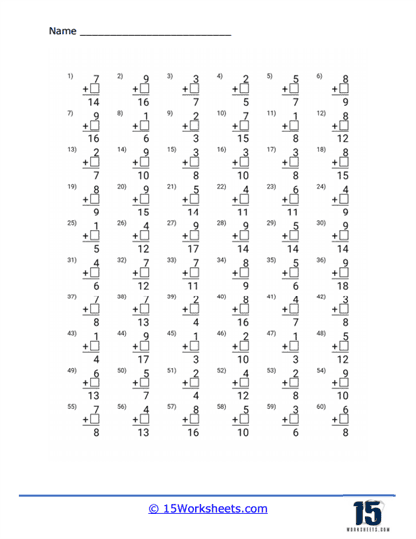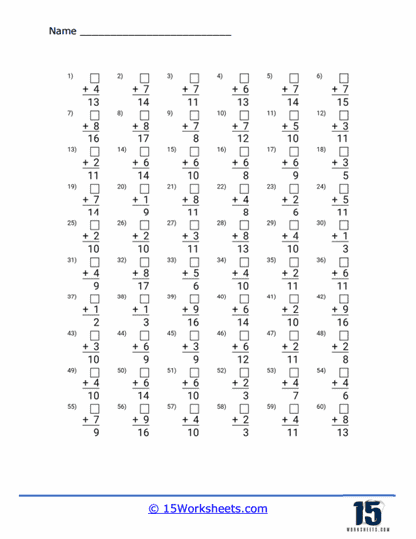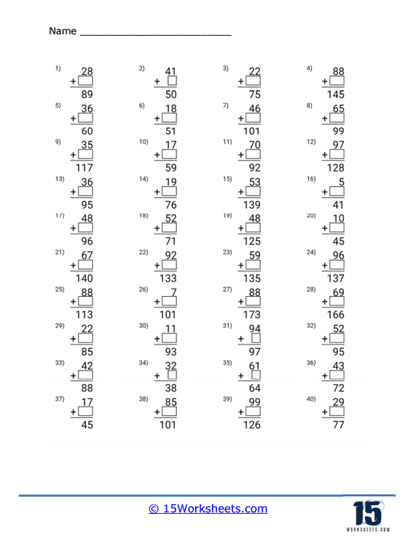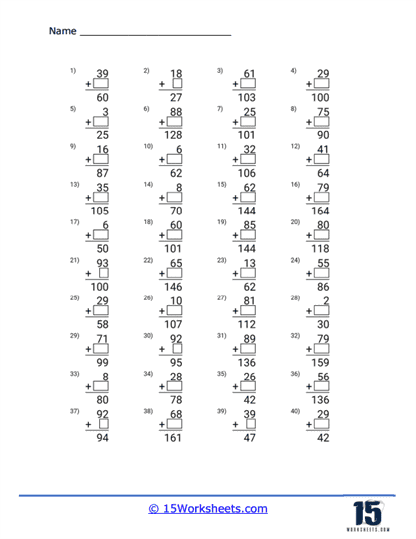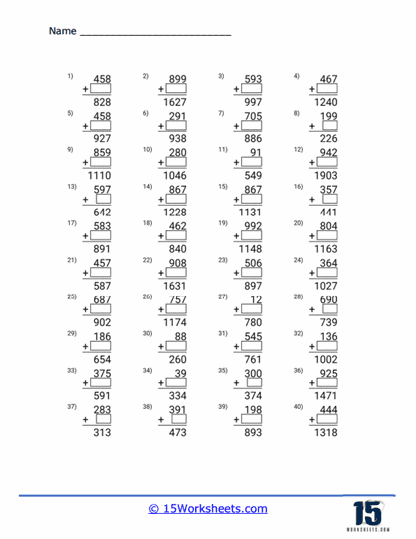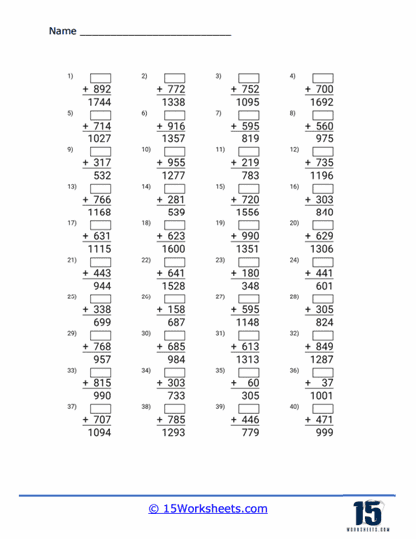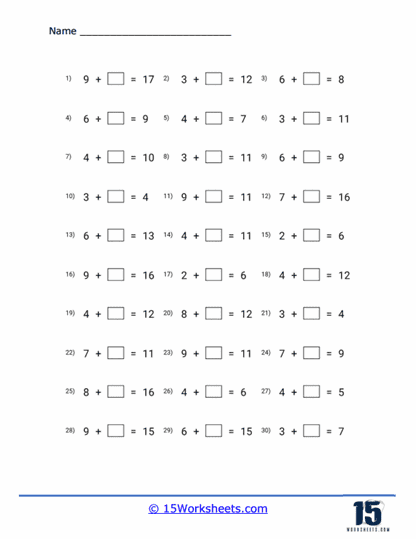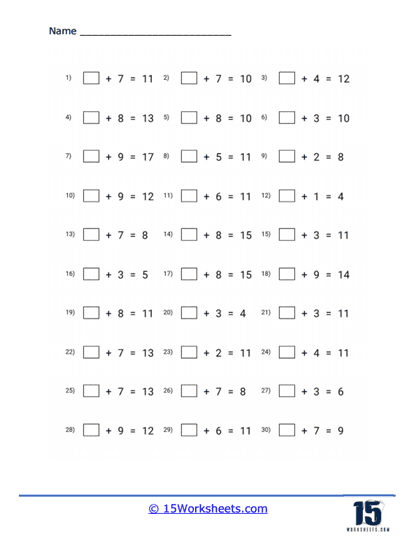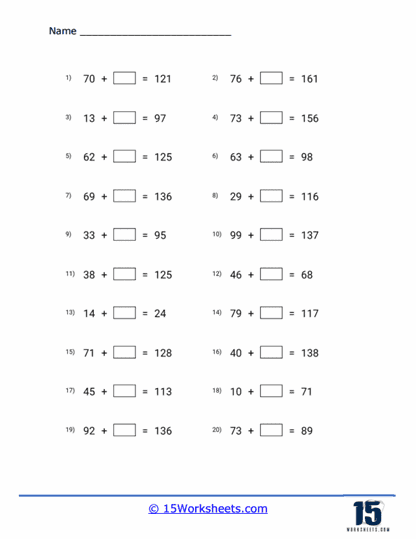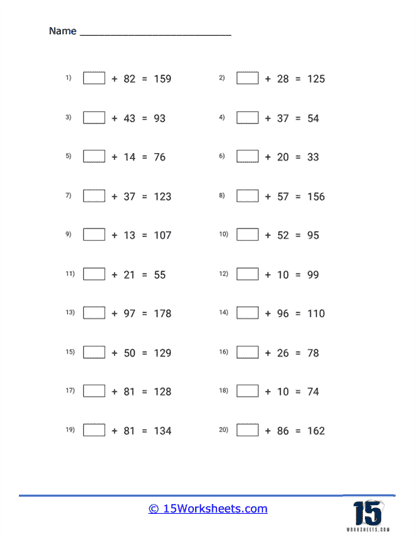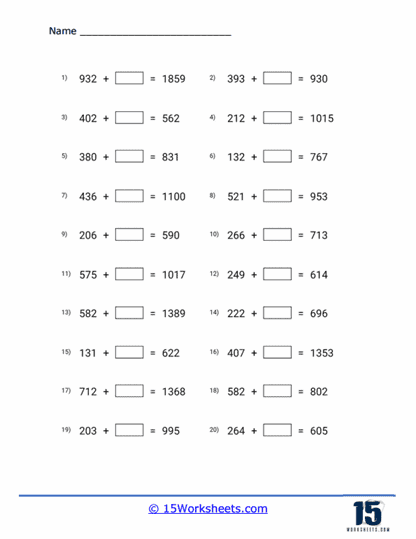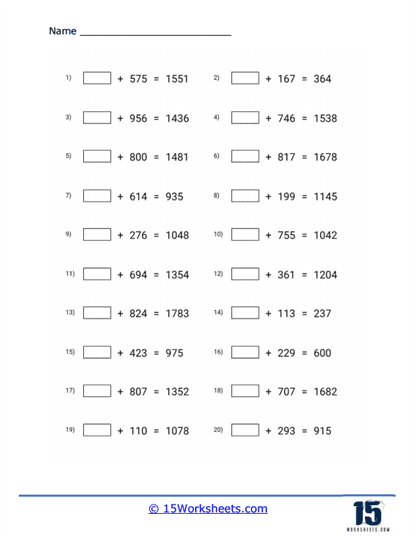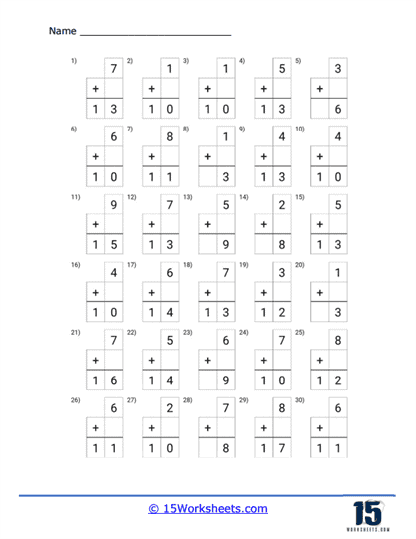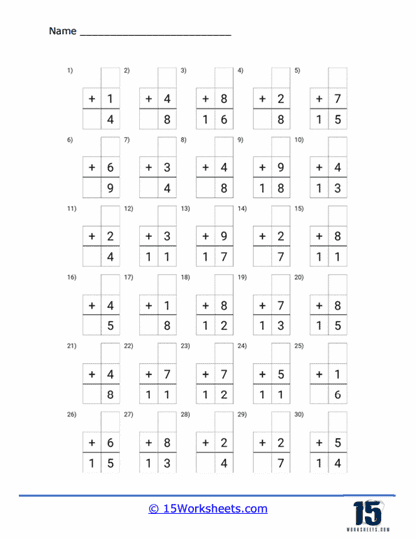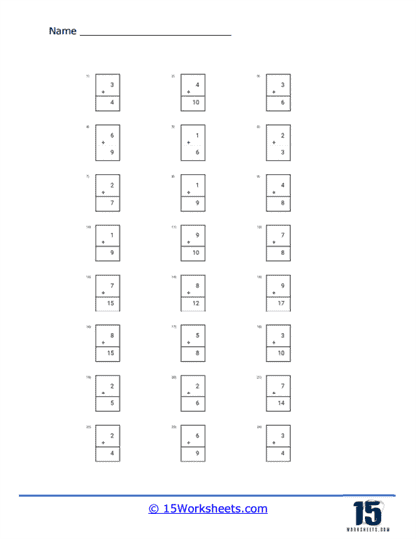Missing Addends Worksheets
All About These 15 Worksheets
These missing addend worksheets are designed to help students master the concept of finding missing addends in addition problems. The worksheets include both vertical and column equations that require students to solve for the missing addend.
An addition problem consists of two or more numbers that are combined together using the addition operation (+) to find their sum. Addends are the numbers that you are adding together. In a simple addition problem like “2 + 3,” the addends are 2 and 3. In more complex problems, there can be multiple addends. The plus sign is the mathematical symbol used to indicate addition. It separates the addends and shows that they are being combined. The sum is the result of adding the addends together. It is the answer to the addition problem. In the example “2 + 3,” the sum is 5. The overall parts of an addition problem look like this:
Addend + Addend = Sum
Each worksheet includes a mix of problems with varying degrees of difficulty, designed to challenge and engage students at different skill levels. The problems are presented in a random order to prevent students from relying on memorization and encourage them to use their problem-solving skills. This series of 15 worksheets also provides ample space for students to show their work and write down their answers. This helps them develop their problem-solving skills and mental math abilities.
Overall, these Missing Addends worksheets provide a comprehensive and engaging way for students to master the concept of finding missing addends in addition problems. With these worksheets, students can develop a solid foundation in math and build the skills they need to succeed in higher-level math courses.
How to Solve Missing Addends Problems
Missing addends problems are math problems where one of the numbers in an addition equation is missing. To solve missing addends problems, you can use subtraction or other strategies. Below is a step-by-step guide that teachers can share with their students to aid them in solving missing addends problems.
- Understand the problem: Identify the missing addend in the problem and the given information.
Example: 8 + __ = 13
In this problem, the missing addend is represented by the underline (__).
- Use subtraction: Since addition and subtraction are inverse operations, you can use subtraction to find the missing addend. Subtract the known addend from the sum to find the missing addend.
Example: 13 (sum) – 8 (known addend) = ___ (missing addend)
- Perform the calculation: Complete the subtraction to find the missing addend.
Example: 13 – 8 = 5
So, the missing addend is 5.
- Check your answer: Add the known addend and the missing addend to ensure that the sum is correct.
Example: 8 + 5 = 13
Since the sum is correct, the missing addend is indeed 5.
For more complex missing addends problems, you can use other strategies such as algebraic equations, number bonds, or fact families. However, for most basic missing addends problems, using subtraction is a simple and effective method.

